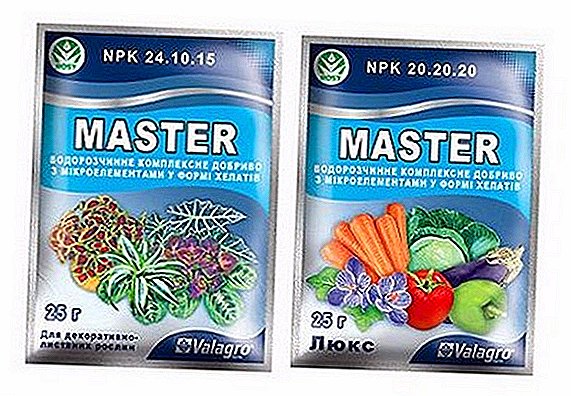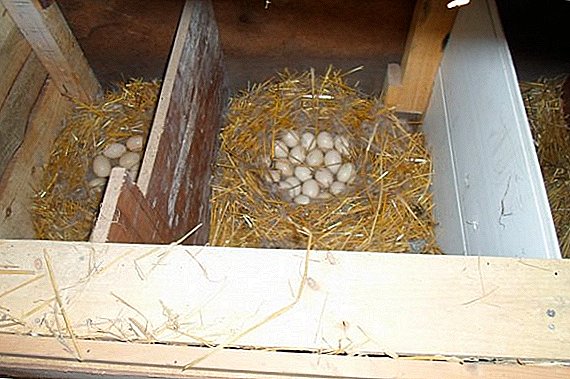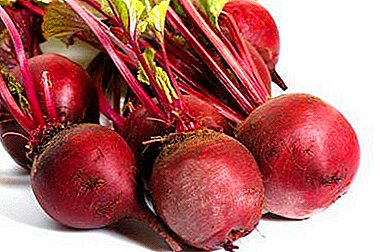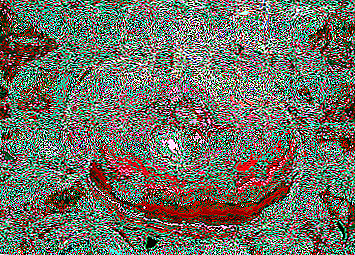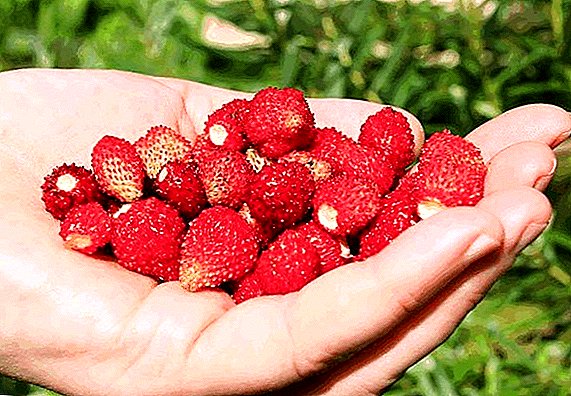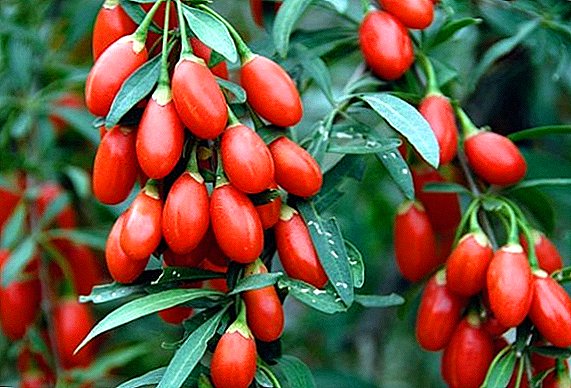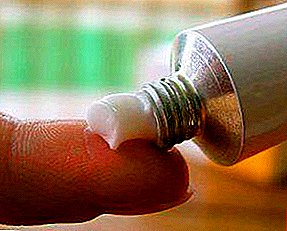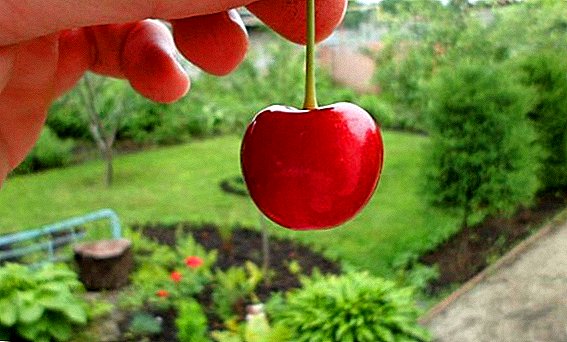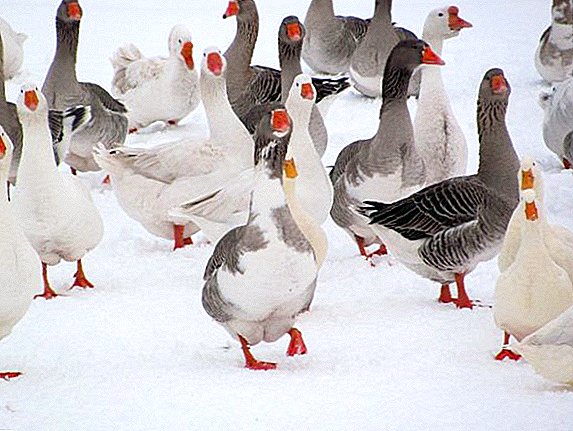 Winter feeding geese is fundamentally different from the summer. In the summer, nature itself gives the bird the vitamins, minerals and nutrients that the goose finds while walking in the grass or in the reservoirs. In winter, these important components of the diet should take care of the owner of the bird, as the reservoirs are covered with ice, and last year's grass has faded and is under the snow.
Winter feeding geese is fundamentally different from the summer. In the summer, nature itself gives the bird the vitamins, minerals and nutrients that the goose finds while walking in the grass or in the reservoirs. In winter, these important components of the diet should take care of the owner of the bird, as the reservoirs are covered with ice, and last year's grass has faded and is under the snow.
Types of feed for geese at home
There are several types of feed for geese. They differ both in composition and purpose. It is necessary to control that the nutrition of the birds is balanced. It is not enough to feed the bird protein food for weight gain, or carbohydrates, giving energy, while ignoring vitamins and minerals.
Check out the breeds of geese for home breeding, large breeds of geese.
In the diet of pets there are no minor components, and if you want to be a good host for your birds, you need to thoroughly understand the types and purpose of feed. 
Carbohydrate
The main components of this type are simple carbohydrates, starch and sugar. Such carbohydrates are very quickly absorbed by the body of most warm-blooded animals, increase the level of glucose in the blood and are the main participants in energy exchange in the body.
This type of feed includes cereals (wheat, millet, rye, oats, corn, etc.), as well as succulent carbohydrate-type feeds (potatoes, beetroot).
Important! In the menu of geese should be gravel. It is needed for normal functioning of the digestive tract. The best way - quartzite gravel resistant to the action of gastric juice.
Proteinaceous
This group is divided into feed of animal and vegetable origin. Animals include meat, offal, meat and bone meal, by-products of dairy production.
All legumes, meal, makukhi belong to the plant type of protein feed. For a balanced diet it is necessary to combine animal and vegetable proteins.

Vitamin
Fresh vegetables (carrots, cabbage, zucchini, cucumbers), silage, flour of coniferous trees in the summer, and clover or alfalfa hay in the winter - this is vitamin feed. This also includes brooms from various tree species.
Learn how to determine the sex of geese, how to choose a goose for a tribe, when geese start to rush, how many eggs a goose carries, how many and how goose eggs are stored for the incubator, how to select and equate goose eggs.
Succulent feed
Almost all vegetable feed can be attributed to this type: root vegetables, beets, cabbage, carrots, and many others.
Mineral feed
Must provide the body's need for minerals. It is, rather, food additives (flour from bones, sodium bicarbonate, eggshell, sodium chloride). Although these elements in the total ration occupy a small proportion, their role in poultry feeding is extremely important. Thanks to minerals, the skeleton is formed, they affect the productivity and quality of eggs.

Basic diet
The goose is a big bird and it consumes a lot of feed. In winter, it is necessary to feed geese more than in summer. At this time of year, they are deprived of the opportunity to independently search for food in the grass outside.
It is believed that for the winter, one goose needs 34-36 kg of vegetables and 12-16 kg of high quality hay. Do not forget also about cereals, beans (peas), mineral additives (eggshell, sodium bicarbonate).
Important! In the warm season, when geese graze most of the day on the grass, only evening feeding will be enough. Thus, the bird produces a conditioned reflex, and it returns home.
Feeding goslings
The first time, young chicks are fed shortly after birth. Wait until the goslings dry out and you can proceed.
Approximate diet for the first week:
- boiled eggs, rubbed with oatmeal;
- well boiled millet;
- finely crushed peas, well soaked in water;
- beet and meadow greens.
 Feeding table goslings, grams per head
Feeding table goslings, grams per head
Favored root vegetables have a beneficial effect on digestion. From the 2nd week chicks begin to feed potatoes.
Young goslings are fed every 2.5-3 hours, up to 7 times a day. Gradually, the frequency of feeding is reduced, and the amount of food is increased. From the 2nd month of life, geese eat the same number of times as adults.
It is useful to know how to grow goslings in an incubator, how to feed goslings from the first days of life, how to feed goslings, how to grow goslings at home.
Feeding adult geese
One adult bird every day needs:
- potato, beet or carrot - 1/2 kg;
- meat and bone meal - 0.15 kg;
- any grain - 0.1 kg;
- minerals - 0.05 kg;
- vitamin and mineral complex.
In winter, increase the grain component of the diet. They love geese and garden waste rich in carbohydrates (tainted, deformed, slightly rotted fruit).
 Table feeding geese, grams per head
Table feeding geese, grams per head
The source of protein needed by the bird is fermented milk production waste.
Some amaranth, hawellaw, sweet clover - these herbaceous plants can be used for feeding instead of cereals.
An approximate feeding scheme for adult geese may look like this:
- 1 and 2 food intake should consist of wet mash (boiled potatoes, vegetables, feed, grass meal);
- the third method - germinated or pre-soaked grains.
Important! During the period of egg production, it should not be dramatically introduced into the diet of poultry food rich in nutrients. Geese start to gain weight quickly and their productivity drops.
What feed can be prepared for the winter
In order for your birds to survive the winter cold normally, they need not only carbohydrates and proteins in the composition of vegetables and cereals. Equally important for the health and normal functioning of geese are vitamins and minerals that can be prepared for the winter from summer.

Hay
Without quality hay for feeding geese in the winter is not enough. Stocks of nettle, sweet clover, and aveluk should be done just before the beginning of the flowering period.
You should not dry hay in the open sun, it should be done in the shade or in haystacks as quickly as possible. After the first signs of dryness appear, the hay is removed for storage in the barn.
When cooking for poultry, dry grass is finely ground and added to the composition of the mash.
Learn how to feed the geese, how to keep the geese in the winter, how the geese can get sick and how to treat them.
Green flour
The end of spring and the beginning of summer is the best time to pick dandelions and nettles. Plants are harvested, lightly dried in the street, and then brought to condition in the oven, at a temperature of 180 ° C. You need to carefully monitor that the greens are not burnt.

When in the oven the grass reaches a state in which it will be easy to break - it's time to get it. After cooling, you need to chop the grass into powder, store in a dry place, in the winter to make mash.
Did you know? When summer grazing on the lawns, one goose eats about 2 kilograms of grass.
Vitamin paste
1 part of hay cooked in summer is soaked in 3 parts of water for 10-12 hours. The grass is squeezed out, the water is boiled over low heat. Foam appears during boiling and must be collected and drained.
Such a paste is given to a bird fresh or salted. In the second case, the mass is covered with salt (it is in this situation both a preservative and a source of minerals for the bird), after which it is stored for a long time.
In winter, it is added to the mash, not forgetting to take into account when feeding the amount of salt in the composition of the paste, because its overdose is very harmful to geese.

Needles of spruce and pine
Pine and spruce spines are rich in vitamins C and E. Pine needles are finely chopped (but not paste) with a blender. In winter, add to the composition of the mash. The tool is also a good prevention against parasites. Apply until the end of winter, after which as part of the needles are formed substances that can not be fed to the bird.
Important! Geese have a high metabolism and mineral metabolism, calcium and sodium are vital for them. Do not forget to feed the bird with shells, chloride and sodium bicarbonate, calcium carbonate.
Silage
Beet and carrot tops, leaves with corn cobs are an excellent basis for making silage. If nettle or bean greens are used for the manufacture of silage, it is necessary to add carbohydrate-containing greens for preservation.

To make silage the most nutritious, you need to follow simple recommendations:
- greens for preparing silage are harvested immediately after the plant begins to spit;
- the collection of legumes must be carried out before the flowering stage;
- corn harvested green.
Once the raw material is collected, it must be immediately subjected to the ensiling procedure so that it does not deteriorate. Silage is well kept in barrels or silos. For greater reliability, you can add salt.
It is necessary to completely isolate silage tanks from oxygen access, and not to allow the temperature to drop below 0 ° C.
Learn how to grow maize and sorghum for silage, how to silage feed.
Properly harvested silage is an excellent source of vitamins, minerals and proteins for poultry in the winter.
Combined silo is considered the most nutritious.

Below are 3 recipes for its preparation:
- Grind and mix in equal proportions unpeeled boiled potatoes, carrots with greens and cabbage.
- Mix boiled potatoes with clover, cereal and amaranth.
- Finely chop the carrot and beetroot with greens, mix with ground bean grass.
The term of preparation of a silo - 2 months from the date of preservation. The rate per bird is 200 g daily. During conservation, make sure that the silage does not start to rot. This can be determined by smell - it should be slightly sour, with no signs of hydrogen sulfide (the smell of rotten eggs).
See also: how to slaughter and cut a goose.
Brooms from deciduous trees
The following species are suitable for making brooms:
- poplar;
- Birch tree;
- acacia;
- alder.
In the middle of autumn, harvesting of branches is carried out. They are dried, and in winter soaked in water, then give the bird. The foliage of these trees does not contain tannins that are harmful to bird's stomachs.

But in brooms there is enough vitamin and minerals that are very necessary in the winter period. You can prepare not brooms, and foliage. It is dried, wiped well, and such flour is added to the diet of the bird (daily rate - 20 g).
Did you know? The life span of domestic geese can reach a quarter of a century.
Aquatic plants
Lemna, salvinia and other floating plants are excellent raw materials for harvesting the source of minerals such as iodine, boron and copper. Plants are caught from the water, dried and introduced into the diet as part of mash.
Seeds
The seeds of amaranth, sweet clover, and aveluk are rich in nutrients, and geese love to feast on them. Seeds are harvested in the summer for feeding adults. Goslings do not need to be fed with seeds, their digestive system is not intended for such food. The required daily rate for one bird is about 40 g.
Feeding and watering geese, ducks in winter: video
Proper feeding of geese in the winter will help the bird survive the cold without losing its weight and health, as well as preserve egg production. Do not be lazy to prepare the plants necessary for winter nutrition from the summer. This will not only benefit your birds, but also significantly reduce the cost of poultry.
Reviews





